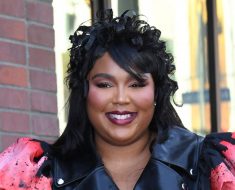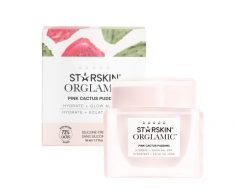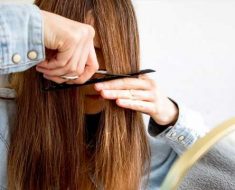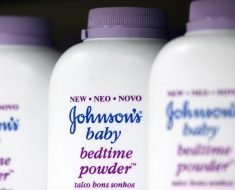The cherry on top of this unprecedented, difficult year is actually more like a cyst. Or a whitehead. Or a blackhead. As many readers have discovered firsthand, periods of stress can lead to an increase in a stress hormone called cortisol, which in turn causes breakouts — and not necessarily on the face.
Pandemic stress-induced acne, including the "maskne" caused by our face coverings, have driven the skin-care discussion this year. But a more overlooked (perhaps because it's quite literally unseen) rise in body acne seems to be occurring parallel to the new bumps on our faces.
"I have seen a surge in both facial and body acne during this pandemic. Acne has been one of the most common complaints in my practice recently," says New York City-based board-certified dermatologist Claire Chang. Whether you've recently spotted the unpleasant surprise of a pimple in a brand new place or have long been dealing with body acne, dermatologists say that there are plenty of ways to eradicate breakouts on the chest, back, butt, and legs.
Body and facial acne have similar underlying causes, explains Chang. Zits pop up as a result of excess oil production, clogged pores, and inflammation, among other factors, which are caused by things like individual genetics, hormones, and stress.
But just because you get cystic acne on your chin or whiteheads around your nose doesn't necessarily translate to the type of breakouts you'll see on the body. "Body acne tends not to show up as frequently as blackheads, but instead can be whiteheads, pimples, and cysts," says board-certified dermatologist Dendy Engelman.
Body acne often occurs in areas that can get oily, like the center of the chest and upper back. "Higher oil levels make an ideal environment for bacteria to grow, leading to inflammation and subsequent acne," says Chang. "The buttocks are also a common area due to irritation from sweating and tight-fitting clothes. Legs can be prone to acne after shaving due to irritation around hair follicles."
Acne on the chest and back is called folliculitis, and it comes from pores that are clogged with oil, dead skin, or other debris, resulting in inflamed hair follicles that appear as small red bumps. Dermatitis, an irritation of the skin sometimes caused by clothing friction combined with sweat, can also lead to breakouts.
And just because you get facial breakouts doesn't necessarily mean you'll also see bumps elsewhere on the body, and vice versa. "Body acne can be completely separate from acne on the face," explains Engelman.
From the emotional to the physical, pandemic-related issues are contributing to the rise in acne.
For one, there's the lifestyle change. "You're sitting, and there's more friction on your butt, which can lead to butt breakouts," Mona Gohara, an associate clinical professor of dermatology at Yale School of Medicine, previously told Allure. All that rubbing of butt on couch can irritate the skin and lead to breakouts.
The rise of at-home workouts isn't helping, either. More time spent in sweaty clothes (because who's changing right after a workout anymore?), and then sitting in those sweaty clothes on the couch, can cause clogged pores.
There's also the fact that many of us, for various reasons, aren't taking as much care of our skin as we used to. "People are exhausted, mentally and physically," says Gohara. "I've been in athleisure since March, and I think the same [thinking applies to] skin care. People aren't taking care of their skin, because they're like 'I can't deal.'" Forget bells and whistles like sheet masks (or butt masks), people are also showering less, which can lead to oil buildup on the body. Others are showering more, which can lead to irritated skin.
Diet is also contributing to newfound body breakouts. “If you are like me, while sitting at home, you may be grabbing for those donuts, ice cream, and wine. Pandemic-related poor diet may be exacerbating your acne," says Chang. "Studies show that high glycemic diets (high sugar and carb foods) and dairy may worsen acne."
Lastly, there's the emotional toll that this year has taken. "Pandemic-related stress may contribute to acne flares," Chang continues. "Stress induces the activation of the hypothalamic-pituitary-adrenal axis and elevates cortisol levels in the body. Stress has been shown to promote oil production and increase inflammation in the skin, in turn, causing acne flares."
What we have here is a perfect storm of acne-causing factors, and absolutely zero of them — from the stress-inducing global pandemic to the fact that it's exceedingly difficult not to spend many hours per day on the couch — are your fault. This isn't so simple as "I slept in my makeup and now I have a zit." It's a compounding of the communal experience right now, and it's showing up on backs, chests, and butts. As always, but especially right now, try to be gentle with yourself and your choices.
Dermatologists offer a multi-step process for tackling body acne: "Find ways to de-stress. Yoga and at-home exercises can be a great way to relieve your stress while staying in shape," says Chang. She also suggests balancing any takeout or highly processed foods with a dose of fruits and vegetables. As for all that couch friction, Chang offers a simple solution: wear loose-fitting clothes.
Meanwhile, make a few changes to your skin-care routine. "The good news is that body acne can be treated with the same products and ingredients that you use for your face," says Engelman. Both dermatologists call out Differin Gel (for which Libby is a spokesperson), an over-the-counter retinoid that helps increase cell turnover to fight acne and clear breakouts more quickly. Engelman is also a fan of Dickinson's Original Witch Hazel Refreshingly Clean Towelettes; use these to swipe sweat after a workout or whenever you need to cleanse skin.
As for body wash, opt for a cleanser that contains acne-fighting ingredients like salicylic acid or benzoyl peroxide. Engelman is a fan of Neutrogena Body Clear Acne Body Wash, which contains 2 percent salicylic acid to both clear the pores and prevent clogged pores, and Differin Daily Deep Cleanser, which contains 5 percent benzoyl peroxide.
Each of these options is available at local drugstores, so you can experiment with new body-care products without dropping a ton of cash. And if none of those options improve the situation, head to your dermatologist for specialized recommendations and treatment.
All products featured on Allure are independently selected by our editors. However, when you buy something through our retail links, we may earn an affiliate commission.
Source: Read Full Article





